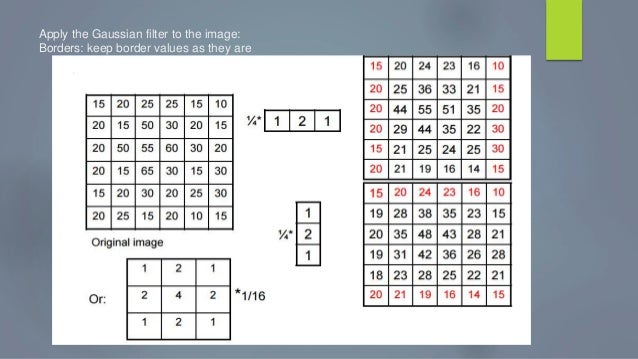Very often we need to perform basic vision operations on a computational graph like building a Laplacian pyramid or filter a tensor with a specific precalculated filter.
Below i present a code snippet for building a fixed non-trainable gaussian filter in keras.
import keras
import numpy as np
import scipy.stats as st
def gaussian_filter_block(input_layer,
kernel_size=3,
strides=(1, 1),
dilation_rate=(1, 1),
padding="same",
activation=None,
trainable=False,
use_bias=False):
"""
Build a gaussian filter block
:return:
"""
def _gaussian_kernel(kernlen=[21, 21], nsig=[3, 3]):
"""
Returns a 2D Gaussian kernel array
"""
assert len(nsig) == 2
assert len(kernlen) == 2
kern1d = []
for i in range(2):
interval = (2 * nsig[i] + 1.) / (kernlen[i])
x = np.linspace(-nsig[i] - interval / 2., nsig[i] + interval / 2.,
kernlen[i] + 1)
kern1d.append(np.diff(st.norm.cdf(x)))
kernel_raw = np.sqrt(np.outer(kern1d[0], kern1d[1]))
# divide by sum so they all add up to 1
kernel = kernel_raw / kernel_raw.sum()
return kernel
# Initialise to set kernel to required value
def kernel_init(shape, dtype):
kernel = np.zeros(shape)
kernel[:, :, 0, 0] = _gaussian_kernel([shape[0], shape[1]])
return kernel
return keras.layers.DepthwiseConv2D(
kernel_size=kernel_size,
strides=strides,
padding=padding,
depth_multiplier=1,
dilation_rate=dilation_rate,
activation=activation,
use_bias=use_bias,
trainable=trainable,
depthwise_initializer=kernel_init,
kernel_initializer=kernel_init)(input_layer)
from my open source project https://github.com/NikolasMarkou/multiscale_variational_autoencoder

